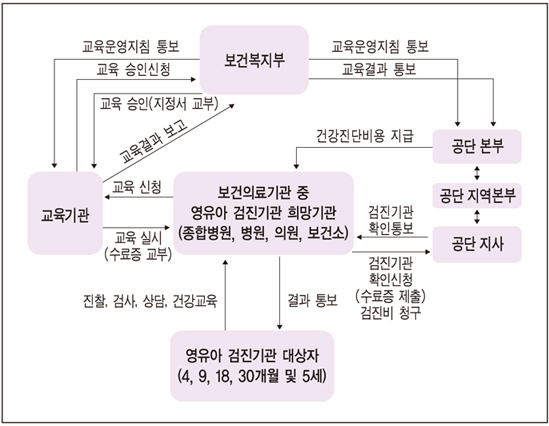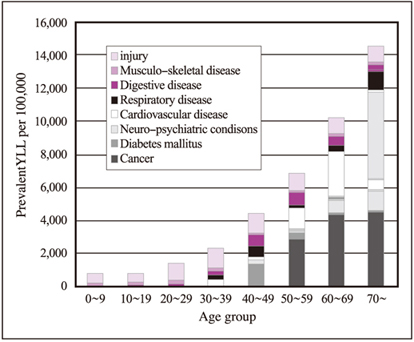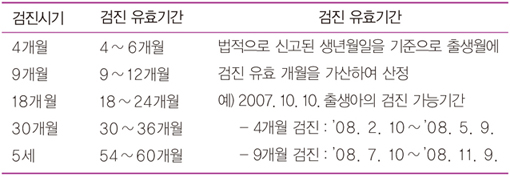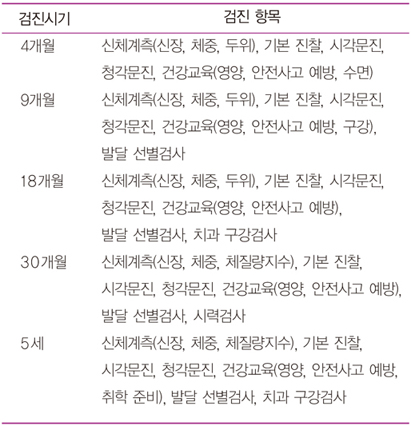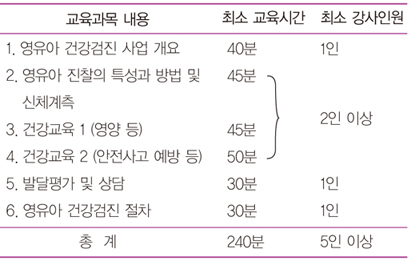 |
 |
- Search
| J Korean Med Assoc > Volume 51(1); 2008 > Article |
Abstract
The mission of the National Health Screening Program for Infants and Children is to promote and improve the health, education, and well-being of infants, children, families, and communities. Although the term 'diagnosis' usually relates to pathology, a similar diagnostic approach applies to a child seen primarily for health supervision. In the case of health, diagnosis determines the selection of appropriate health promoting and preventive interventions, whether medical, dental, nutritional, educational, or psychosocial. Components of the diagnostic process in health supervision include the health 'interview'; assessment of physiological, emotional, cognitive, and social development (including critical developmental milestones); physical examination; screening procedures; and evaluation of strengths and issues. Open and informed communication between the health professional and the family remains the most significant component of both health diagnosis and health promotion. Families complete medical history forms at their health supervision visit. Family-friendly questionnaires, checklists, and surveys that are appropriate for the child's age are additional tools to improve and update data gathering. This type of information helps initiate and facilitate discussions between the family and the health professional. This article provides a comprehensive review of the current National Health Screening Program for Infants and Children in Korea.
References
1. AAP Committee on Children with Disabilities. Developmental surveillance and Screening of Infants and Young Children. Pediatrics 2001;108:192-195.
2. Pelletier H, Abrams M. The North Carolina ABCD project: a new approach for providing developmental services in primary care practice Available from: www.nashp.org/Files/CW5-NCfield-report-final-july-2002.pdf
3. Rydz D, Srour M, Oskoui M, Marget N, Shiller M, Birnbaum R, Majnemer A, Shevell MI. Screening for the developmental delay in the setting of a community pediatric clinic: A prospective assessment of parent-report questionnaire. Pediatrics 2006;118:1178-1186.
4. Gidding SS, Dennison BA, Birch LL, Daniels SR, Gillman MW, Lichtenstein AH, Rattay KT, Steinberger J, Stettler N, Van Horn L. American Heart Association. Dietary recommendations for children and adolescents: a guide for practitioners. Pediatrics 2006;117:544-559.
5. Screening for Asymptomatic Bacteriuria. U.S. Preventive Service Task Force Available from: http://www.ahrq.gov/clinic/uspstf/uspsbact.htm
6. Screening and Supplementation for Iron Deficiency Anemia. U.S. Preventive Service Task Force Available from:
http://www.ahrq.gov/clinic/uspstf/uspsiron.htm
- TOOLS
-
METRICS

-
Related articles in
J Korean Med Assoc -
Recommended Immunization Schedule for Health Infants and Children1997 December;40(12)
Proposal of a Screening Program for Gastric Cancer in Korea2002 August;45(8)





